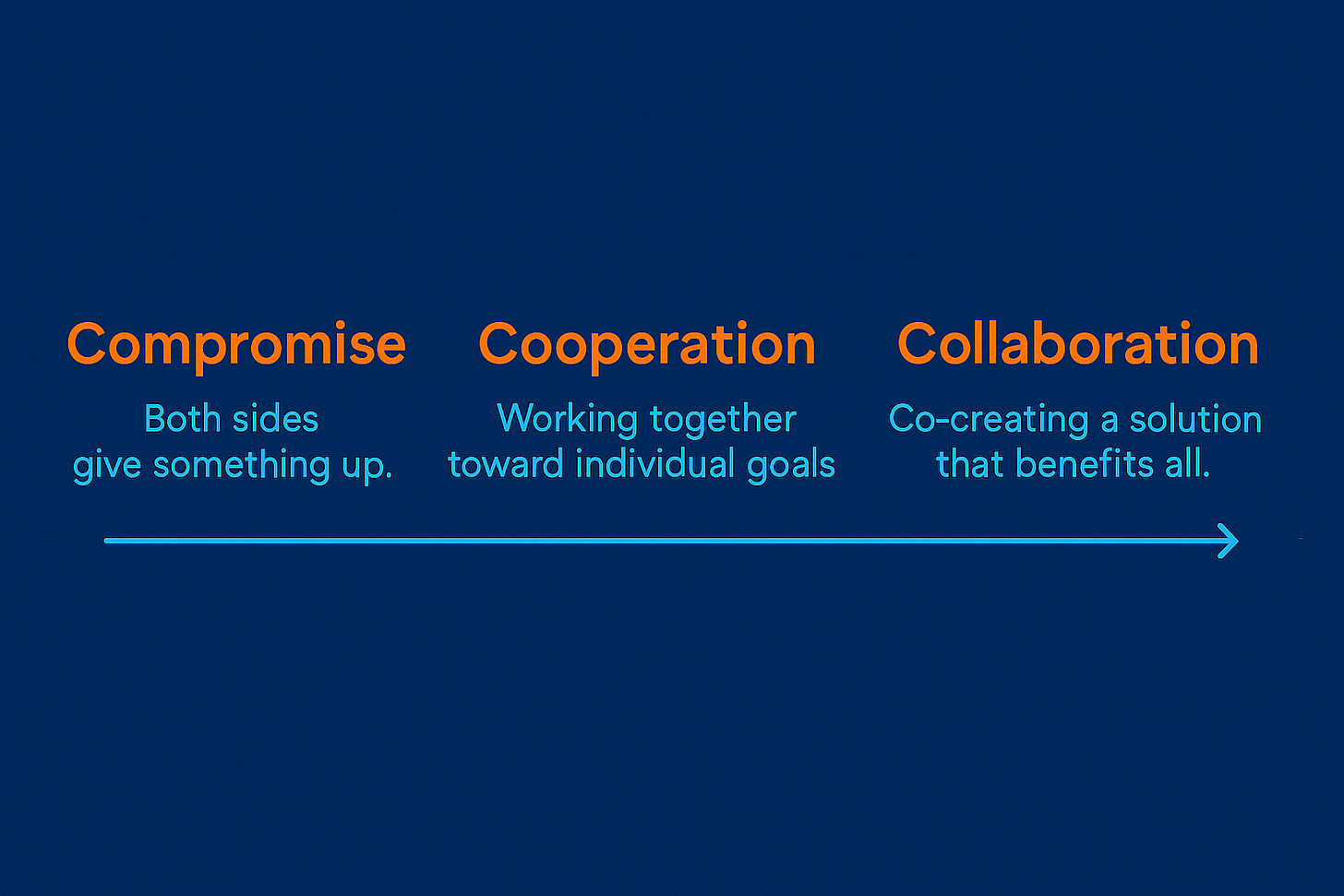
We are nearing the end of our series on conflict management styles, so it's time for "compromise." We saved this one for last as it tends to be one of the "go-to" solutions for conflict: win, lose, or compromise.
Before we discuss "compromise," I want to review what we've covered so far.1 In part, we've shown that you have more than the simplified three options above when dealing with conflict.
Previously, we measured “high” or “low” concern for oneself and others.2 We've explained that conflicts happen when "my needs" and "your needs" seem at odds with each other. With that way of diving up our options, we identified four styles:
"I win. You win." Collaborating
"I win. You lose." Competing
"I lose. You win." Accommodating
"I lose. You lose." Avoiding
(These options are akin to a manual gear shift - where different gears help you with varying driving scenarios. We need the different conflict modes to help us manage our varying personal and professional challenges.)
We've also identified the pros and cons of these styles to make a critical point - no one style is "always right."
So why cover all this before we get to compromise? Surely, compromise is the one we understand best, right? After all, how many times have we been told, "You have to compromise" to solve a conflict at work or home?
The problem is that we may not be doing the job well. We see it as just having to give up something we want to get something else we want more. And while that is true to a certain extent, we can fine-tune that approach to get even better results.
With the compromising style, we are “somewhere in the middle” of the four styles discussed so far. So, there is a mix of winning and losing.
More than just a mix of "winning" and "losing," there is a mix of all the styles here - some accommodating, some competing, and some collaborating. And possibly even some “avoiding”
Accommodating—You may need to prioritize certain needs for someone else so that you can get your key needs met. It's not just about "giving something up" but about saying, "Your needs are important, so I'm willing to put them first."
Competing—Some of your needs will be "non-negotiable." You need to know what they are so that you know when to "push" for what you want and lean into the competing style instead of just accommodating the other person to "keep the peace."
Collaborating—You can also lean into the mutual wins here to compromise well. While you may not get everything on your wish list - and you can't give the other person everything on their list, you can make sure that both of you get something you want (a key skill in negotiating).
You may even find yourself “avoiding” some topics because you realize that some are "off the table" in this conversation.
A really productive compromise requires creativity and skill. It is not a half-a$$ solution. Here are two examples:
A couple is planning a vacation. One wants a beach destination, while the other prefers a city. They compromise by choosing a coastal city where they can enjoy both relaxing on the beach and exploring urban attractions.
In a team project, one member wants a detailed report, while another prefers a concise summary. They compromise by creating a presentation with a brief overview and an appendix containing the detailed report, satisfying both preferences.
The Pros of Compromise
Can speak to both my agenda and your agenda,
A useful option when time or other resources are limited
The Cons of Compromise
While it may speak to both my needs and your needs, it does not fully meet these.
If not done well, both parties walk away disappointed instead of feeling like they got a “win.”
Be intentional for this week's small experiment when you need to compromise. Highlight the "wins" for both parties.
Whenever I mention how “review is the mother of learning,” I also feel a need to mention that we don’t seem to know who the father is. Poor learning.
This model for understanding conflict derives from the Thomas-Kilmann Conflict Mode Instrument.



